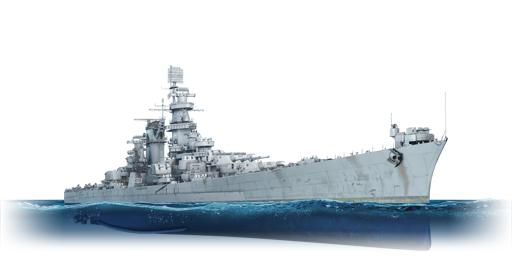The Alaska class was the first and only class of ships commissioned under the classification of Large Cruiser. USS Alaska was the lead ship of her class, and had two sisters Guam and Hawaii. She was laid down on 17th December 1941 and commissioned on 17th June 1944. The main armament consisted of nine 12 inch/50 Mark 8 guns in triple mounts with two turrets located on the bow and one aft. Her long-range anti-aircraft protection suite was made up of twelve 5 inch/38 Mark 12 dual-purpose guns in twin mounts with three turrets fore and aft placed much like contemporary US cruiser arrangements. Medium and short range anti-aircraft duties were performed by fourteen 40 mm Bofors L/60 Mark 2 guns mounted in quadruple mounts and thirty-four 20 mm Oerlikon Mk. II autocannons located on various places along the ship. During WWII, she participated in the Battle of Okinawa, which was her only major action. On 17th February 1947, Alaska was decommissioned. There was some thought given to converting the Alaska class to missile ships, but these plans never materialised and Alaska was scrapped in 1960.
USS Alaska was introduced in Update "Drone Age". She is fast and quite manoeuvrable ship, although due to her light armour when compared to for example Scharnhorst-class battlecruisers, and is no match against a direct battleship encounter. Her magazines located on the waterline are prone to fatal explosion due to only 228.6mm thick of belt armour protecting these vital areas. Other than that, her guns offer great penetration values and fast reload only offset by quite small explosive charge of only 7.73 kg TNT eq in her Mark 18 APCBC shells.














